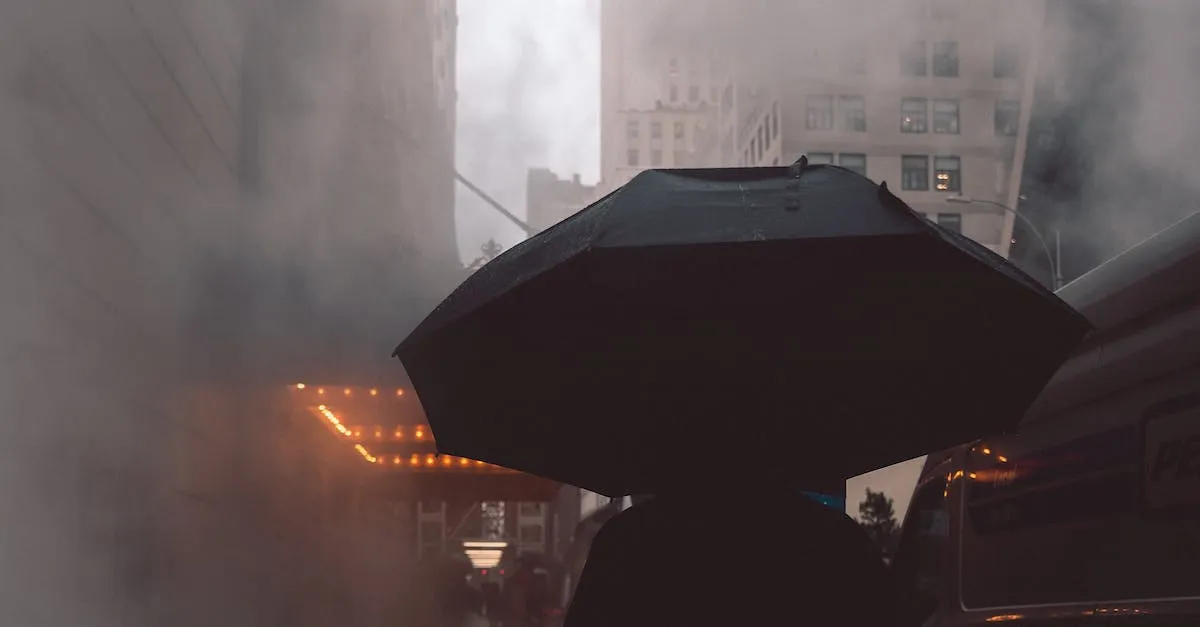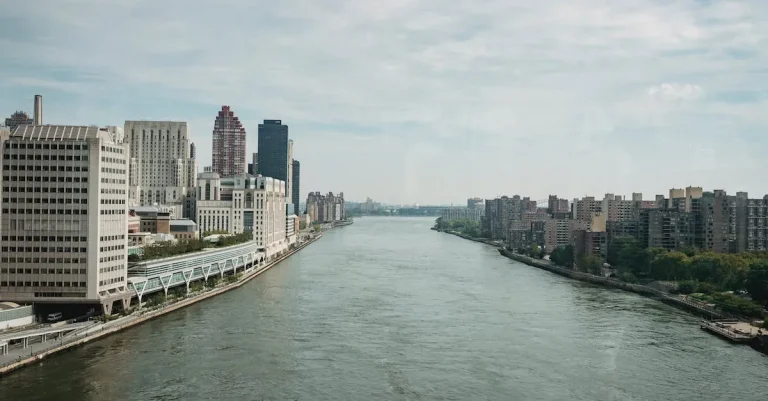Does It Rain A Lot In New York? Examining Precipitation Across The State
With its towering skyscrapers and constant bustle, New York brings to mind exciting city vibes more than rainy weather. But how much rainfall can you really expect in the Empire State? Whether you’re planning a trip to Manhattan or considering a move to Syracuse, it helps to understand New York’s diverse climate.
The short answer: Rainfall varies widely across New York. While NYC lives up to its reputation for plentiful precipitation, some areas get fairly little. The state also sees noticeable seasonal differences in rainfall.
Overview of New York’s Rainfall Patterns
When it comes to rainfall, New York is a state that experiences a diverse range of precipitation patterns. From the bustling streets of New York City to the scenic landscapes of Upstate New York, the amount of rain can vary significantly across different regions.
Understanding the average statewide precipitation, regional differences, and seasonal variations can help residents and visitors alike plan their activities and be prepared for the weather.
Average statewide precipitation
New York receives an average of about 45 inches of precipitation annually. This includes rainfall as well as snowfall. The state’s precipitation levels are influenced by a variety of factors, including its proximity to the Atlantic Ocean and the Great Lakes, as well as its diverse topography.
The coastal areas tend to receive more rainfall compared to inland regions.
According to data from the National Centers for Environmental Information, the wettest part of the state is the southwestern region, which includes areas such as Chautauqua and Allegany counties. On the other hand, the northeastern part of the state, including the Adirondack Mountains, typically receives lower levels of precipitation.
Regional differences across the state
As mentioned earlier, there are notable regional differences in rainfall across New York. The state can be divided into several distinct climate zones, each with its own unique precipitation patterns. For example, the New York City metropolitan area experiences a humid subtropical climate, which means it receives a moderate amount of rainfall throughout the year.
In contrast, the western part of the state, particularly the Great Lakes region, is known for its lake-effect snowfall. This occurs when cold air passes over the relatively warm waters of the Great Lakes, resulting in enhanced snowfall in certain areas.
Cities like Buffalo and Syracuse often make headlines for their impressive snowfall totals during the winter months.
Seasonal variations throughout the year
New York’s precipitation also varies significantly throughout the year. In general, the state experiences a higher amount of rainfall during the spring and summer months, with May and June being the wettest months on average.
This is due to increased moisture in the atmosphere and the influence of weather systems that bring rain to the region.
During the fall and winter months, the precipitation in New York transitions from rain to snow. The state is no stranger to winter storms, which can bring heavy snowfall and impact travel and daily life.
It’s important for residents to stay informed about weather forecasts and be prepared for winter weather conditions.
For more detailed information about New York’s precipitation patterns, you can visit the website of the National Centers for Environmental Information. They provide comprehensive data and analyses on weather and climate across the United States.
Rainfall in New York City and Downstate
New York City’s precipitation
New York City, known for its bustling streets and iconic skyline, also experiences a fair amount of rainfall throughout the year. The city’s average annual rainfall is approximately 49 inches, making it one of the wettest cities in the United States.
The majority of the rainfall occurs during the spring and summer months, with May being the wettest month on average. However, it is important to note that rainfall patterns can vary from year to year, so it is always a good idea to check the weather forecast before heading out.
New York City’s precipitation is influenced by its coastal location and proximity to the Atlantic Ocean. The city’s tall buildings and concrete surfaces also contribute to a phenomenon known as the “urban heat island effect,” which can result in more intense rainfall in certain areas.
Additionally, the city’s geographical features, such as the Hudson River and the surrounding mountains, can impact local weather patterns and precipitation levels.
If you’re planning a trip to the Big Apple, don’t let the rain dampen your spirits! There are plenty of indoor activities and attractions to enjoy, such as museums, theaters, and shopping malls. And hey, a little rain can even add a romantic touch to your visit, so don’t forget to pack an umbrella!
Long Island and the Lower Hudson Valley
While New York City may steal the spotlight when it comes to rainfall, the surrounding regions of Long Island and the Lower Hudson Valley also experience their fair share of precipitation. On average, Long Island receives around 45 inches of rainfall per year, while the Lower Hudson Valley receives approximately 42 inches.
Long Island’s rainfall patterns are influenced by its coastal location and the surrounding bodies of water, including the Atlantic Ocean and Long Island Sound. The island’s geography, with its mix of urban areas, suburbs, and rural landscapes, can also impact rainfall distribution across different regions.
The Lower Hudson Valley, which includes counties such as Westchester and Rockland, experiences similar rainfall patterns to Long Island. The region’s proximity to the Hudson River and the Catskill Mountains can affect local weather conditions and precipitation levels.
Whether you’re exploring the vibrant neighborhoods of New York City or venturing out to Long Island or the Lower Hudson Valley, it’s always a good idea to check the weather forecast and come prepared for possible rain showers.
After all, as the saying goes, “April showers bring May flowers,” and New York State certainly knows how to bloom in the spring!
Upstate New York’s Diverse Rainfall
When it comes to rainfall, Upstate New York is a region of contrasts. With its diverse geography, the state experiences varying levels of precipitation across different areas. From the wetter western region to the drier central and northern parts, let’s take a closer look at the unique precipitation patterns in Upstate New York.
The wetter western region
The western region of Upstate New York, particularly along the shores of Lake Erie and Lake Ontario, receives a significant amount of rainfall throughout the year. This is due to the lake effect, which occurs when cold air passes over the warmer waters of the Great Lakes, resulting in enhanced cloud formation and precipitation.
Cities like Buffalo and Rochester are known for their higher annual rainfall compared to other parts of the state.
According to the National Weather Service, Buffalo receives an average of 40 inches of rainfall annually, while Rochester receives around 34 inches. These numbers may vary from year to year, but they give us a general idea of the wetter conditions in this region.
Less rainfall in central New York
In contrast to the western region, central New York experiences relatively lower rainfall. Cities like Syracuse and Utica receive an average of 36 inches and 31 inches of rainfall per year, respectively.
This can be attributed to the sheltering effect of the Adirondack Mountains, which block a significant portion of moisture-laden air from reaching this area.
While central New York may have fewer rainy days compared to the western region, it is important to note that precipitation is still a vital component for agricultural activities and the overall ecosystem.
Farmers in this area rely on precipitation for crop growth, and a balanced amount of rainfall is crucial for maintaining the region’s water resources.
Precipitation in the Adirondacks and North Country
The Adirondack Mountains and the surrounding North Country region have their own unique precipitation patterns. The higher elevations of the Adirondacks experience more precipitation, including snowfall during the winter months.
This contributes to the region’s picturesque landscapes and supports outdoor activities such as skiing and snowboarding.
The North Country region, which includes cities like Plattsburgh and Watertown, receives a moderate amount of rainfall throughout the year. The proximity to the Great Lakes and the Adirondack Mountains influences the precipitation levels in this area.
It’s important to remember that these precipitation patterns can vary from year to year and are subject to natural climate fluctuations. However, understanding the general trends in Upstate New York’s rainfall can help us appreciate the diverse weather conditions that exist across the state.
Rain, Snow and Extreme Weather
When it comes to weather, New York State experiences a diverse range of precipitation throughout the year. From winter snowfall to thunderstorms and even tropical storms, the state sees it all. Let’s take a closer look at the different types of precipitation and extreme weather events that can occur across the state.
Winter snowfall patterns
New York is no stranger to snowfall during the winter months. The amount of snowfall can vary significantly depending on the region. For example, the upstate region, including areas like Buffalo and Syracuse, typically experiences heavier snowfall due to the influence of the Great Lakes.
On average, these areas can receive over 100 inches of snowfall each winter, making them a haven for snow enthusiasts.
On the other hand, the New York City metropolitan area tends to receive less snowfall due to its proximity to the coast. However, that doesn’t mean they escape the winter weather entirely. The city still sees an average of around 25 inches of snowfall each year, with occasional snowstorms that can bring significant accumulation.
It’s important to note that these are average figures, and snowfall patterns can vary from year to year. Factors such as temperature, wind patterns, and storm tracks all play a role in determining the amount of snowfall a particular region receives.
Thunderstorms and hail
During the warmer months, thunderstorms are a common occurrence in New York State. These storms are often accompanied by heavy rain, lightning, and sometimes even hail. Thunderstorms can develop quickly and bring intense bursts of rainfall, leading to localized flooding in some areas.
Hail, which are balls of ice that form within thunderstorm clouds, can also occur during severe storms. While hailstones are typically small in size, ranging from peas to marbles, occasionally larger hailstones can be seen during more intense storms.
These larger hailstones can cause damage to property and vehicles.
Tropical storms and flooding
New York State is not immune to the impacts of tropical storms and hurricanes, although they are less frequent compared to coastal regions further south. When tropical storms or hurricanes make landfall in the region, heavy rain and strong winds can cause widespread flooding and damage.
Areas near the coast are particularly vulnerable to storm surge, which is the rise in sea level caused by the storm’s winds pushing water onshore.
It’s important for residents and visitors to stay informed about weather alerts and evacuation orders during these extreme weather events. The National Weather Service’s website, www.weather.gov, provides up-to-date information and forecasts to help people prepare and stay safe.
Changes in New York’s Rainfall
New York is known for its unpredictable weather, but have you ever wondered if it rains a lot in the state? Let’s take a closer look at the changes in New York’s rainfall patterns over the years.
Recent increases in heavy rain
In recent years, New York has experienced an increase in heavy rainfall events. According to data from the National Weather Service, the frequency of heavy rainstorms has been on the rise. These intense downpours can lead to flash flooding, causing damage to infrastructure and disrupting daily life.
One study conducted by scientists at Columbia University found that heavy rainfall events in New York have increased by nearly 70% since the mid-20th century. This increase is attributed to climate change, as warmer air can hold more moisture, leading to more intense rainfall events.
Furthermore, the increase in heavy rain is not only limited to New York City but is also seen across the entire state. Cities like Buffalo, Syracuse, and Albany have all experienced a rise in heavy rainfall events in recent years.
Projected impacts of climate change
The projected impacts of climate change on New York’s rainfall patterns are concerning. According to a report by the New York State Energy Research and Development Authority (NYSERDA), the state is expected to see an increase in both the frequency and intensity of heavy rainstorms in the coming decades.
This increase in heavy rainfall can have significant consequences for the state. It can lead to more flooding events, which can damage homes, infrastructure, and agricultural lands. It can also have detrimental effects on water quality and pose risks to public health.
It is crucial for policymakers and communities to take proactive measures to adapt to these changing rainfall patterns. This includes investing in better stormwater management systems, updating infrastructure to handle increased rainfall, and implementing sustainable practices that reduce the impact of climate change.
For more information on New York’s rainfall patterns and climate change, you can visit the New York State Energy Research and Development Authority (NYSERDA) website. They provide valuable resources and insights into the state’s efforts to address climate change and build a more resilient future.
Conclusion
While upstate regions are relatively dry, New York City and some other parts of the state have gained a wet reputation for good reason. Seasonal variations mean spring and summer see the most rainfall, while winter precipitation falls as snow across northern areas. And extreme weather events may become more frequent as the climate changes. Understanding the nuances of New York’s precipitation can help in planning any activities across this geographically diverse state.








